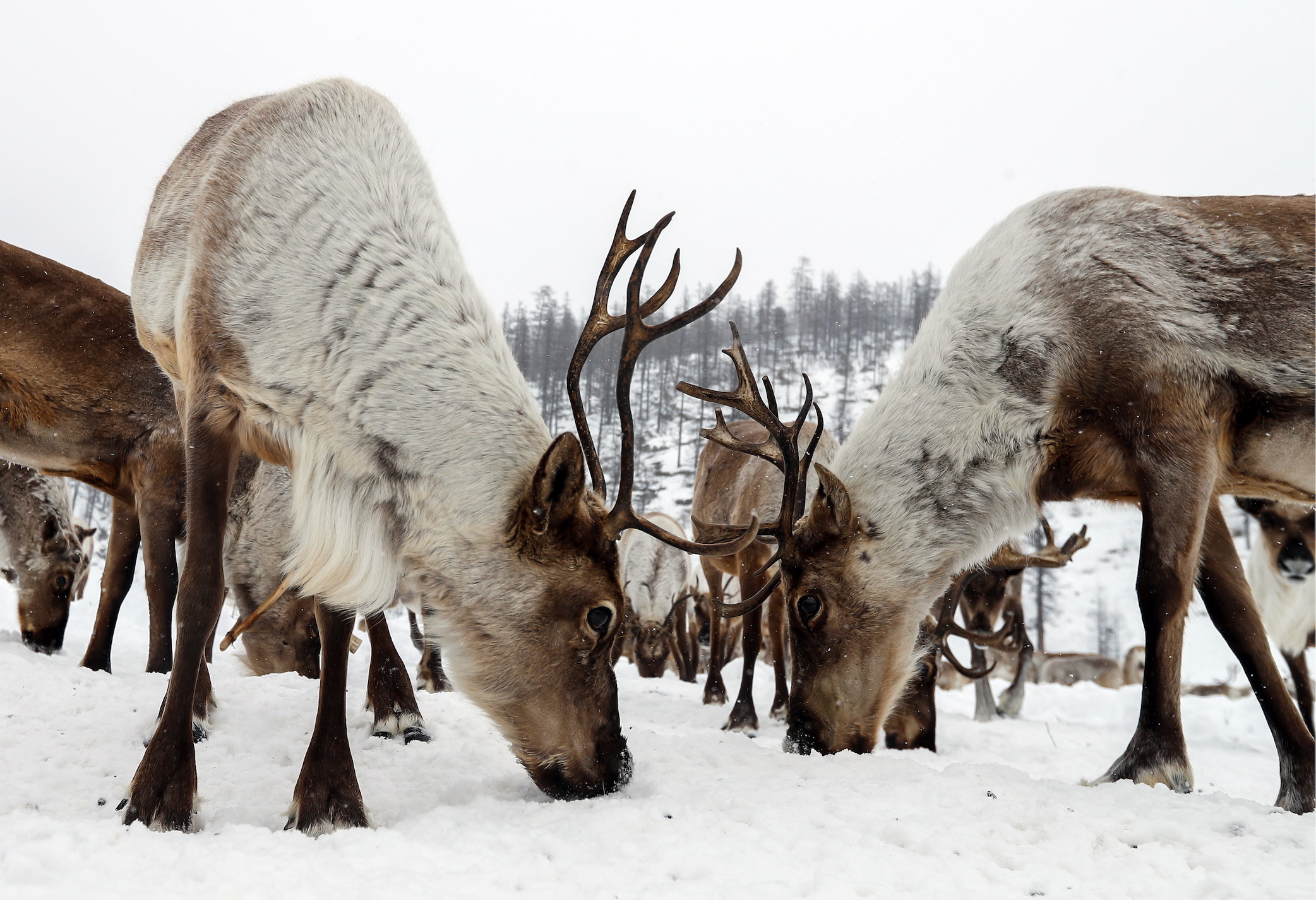ID :
626158
Mon, 03/28/2022 - 10:48
Auther :
Shortlink :
https://oananews.org//node/626158
The shortlink copeid
Yakutia plans to extend to new districts project to develop taiga deer farming

YAKUTSK, March 28. /TASS/. Yakutia plans to extend to the region’s new districts a pilot project to preserve and develop the taiga deer farming, the region’s Agriculture Ministry’s representative Innokentiy Balanov told TASS, adding the pilot project had been launched in the Aldan District two years earlier.
The deer of taiga breeds are used mostly as transport during hunting in hard-to-reach areas. Taiga deer farming is developed in China, Mongolia, in Sweden’s south, and in Norway and Finland. Russia’s various regions offer local incentives for the sector.
"Under Yakutia’s agriculture development program, the region has launched a pilot project of hedged herds in the taiga," the official said. "Two years ago, the Khatystyr Company, organized in the Aldan District by the North’s low-numbered indigenous peoples, began the project. This year, the budget allocates 15 million rubles ($135,000) to extend the pilot project to Yakutia’s south."
The support will be available is subsidies for big breeding companies, which have at least three standard herds, each of which of at least 500 animals. The project invites companies working in the Aldan, Neryungri, Olekminsk and Ust-May districts.
Endangered deer farming
The taiga deer farming began in Russia in the 1960s. "The taiga deer farming in Russia was on a vast territory from the Kola Peninsula to practically the Sea of Okhotsk. At the Soviet times, there were about 500,000 deer, and in Yakutia - up to 100,000. In addition to the transport purposes, the amount of animals was increased for the purposes of geology exploration and industrial development. Later, gradually, the sector was degrading," the expert said.
In the late 1990s, the taiga reindeer farming in Russia was recognized as an endangered activity. The shrinking grazing areas were the key reason. Other reasons included the active industrial development and consequent active construction of roads, railways and power lines. People, who used to work in reindeer farming, were moving to other industries - horse breeding, hunting.
According to the regional Agriculture Ministry, the number of deer in south Yakutia’s taiga zone has decreased to 24,000 animals. The regional deer farming occupies about 80 million hectares, or the region’s 40% of the territory, free from other animal farming and agriculture. Almost 80% of these 80 million hectares are forest lands.
"Unlike in foreign countries, reindeer farming in Russia is considered a contact type of business, which employs mostly the North’s low-numbered indigenous peoples. This is the basis of their economy, culture and traditions. And the regional government’s task to us is to preserve and build up the livestock," the official said.
Pilot project
Hedge maintenance provides for the construction of corrals, fences, summer bases, sun shelters, separate route houses in nomadic areas, summer houses and storage facilities. The main advantage of such holding is the control of pasture turnover and the preservation of pastures, clear pasture boundaries, separated from adjacent neighboring farms.
The practice of using corrals to hold deer was introduced in the southern regions of Norway, Sweden and Finland in the 1960s. A similar project is being successfully implemented on the Yamal Peninsula. "By using corrals, the herders ensure the safety of deer and fawns (deer kids up to 12 months old - TASS). In recent years, many fawns have been killed by wolves and bears, whose numbers have increased as a consequence of the large fires in the region. Corrals could limit these losses," the ministry’s representative said.
The Khatystyr Company, where the pilot project was launched, has about 3,000 deer on free grazing. The herds are located 100, 200 and 600 km from the village of Khatystyr. The company has received a subsidy of 15 million rubles ($135,000) to build about 15 km of hedges, six houses and one corral. The plan is to build 30 km of fences. In addition, with the allocated funds, the company has purchased a metal net and an electric fence, which, in particular, will ensure safe calving.
"Before the pilot project, farms have been building hedges, but not that many. Hedges are not placed everywhere - to allow free migration of wild animals - but their effectiveness is obvious. For example, in autumn, when the deer scatter searching for mushrooms, the hedges do not allow the animals to walk away too far," Khatystyr’s Director General Ivan Ilistyarov said.
Hedges are also important to mark the territory for tourists and hunters to see its borders. They show that those are domestic, not wild deer, he continued. In his opinion, reindeer farming in the Aldan district can be preserved only thanks to the hedge maintenance.
"Industrial development has been very intensive in Yakutia. From the strategical point of view, this is good - new jobs are available, taxes are paid; but we must not forget about the environment, about the preservation of reindeer farming in the district. The development of reindeer farming as an industry is not only important for our culture and traditions - it is also the key to preserve jobs in the village," he added.
Read more





